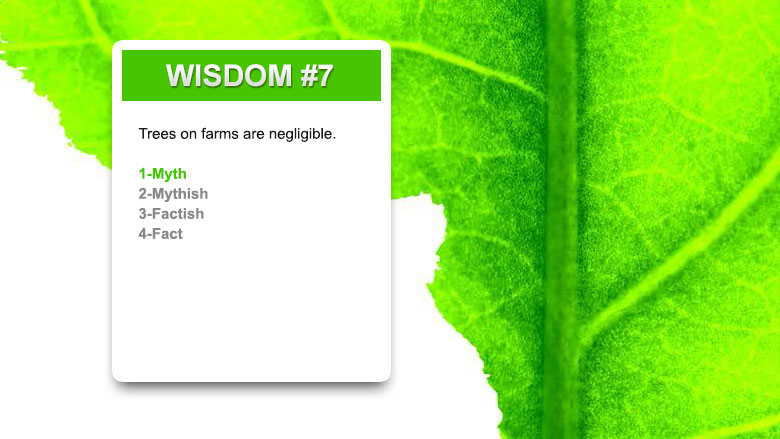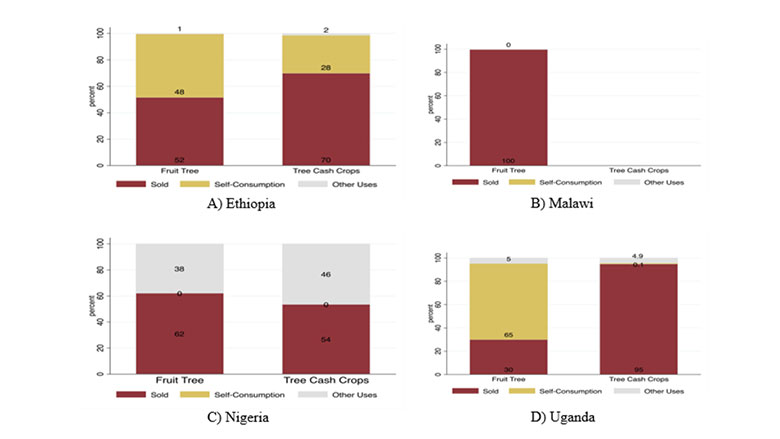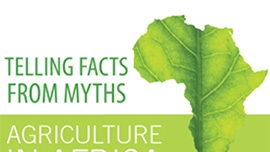SUMMARY
The issue:
Trees on farms are often overlooked in research and policy on agriculture, forests, and rural livelihoods in Sub-Saharan Africa. Forestry as a field largely focuses on trees in forests rather than outside them. The focus in agriculture is usually on annual crops. One consequence of this separation is limited empirical knowledge of the prevalence of trees on farms and their economic contribution across the continent. Sub-national case studies suggest that on-farm trees can be important to household welfare, but there is little national-scale evidence.
The analysis:
This study uses nationally representative data from the Living Standards Measurement Study - Integrated Surveys on Agriculture (LSMS-ISA) in five African countries: Ethiopia, Malawi, Nigeria, Uganda and, Tanzania. Together, these countries represent 41% of the population in Sub-Saharan Africa and cover a wide array of agro-ecological zones. The dataset includes information from more than geo-referenced 20,000 households surveyed during 2010-2012. This also permits examining the effect of variables such as distance to forest, population, soil quality, and other relevant variables. This information is used to picture and explain the prevalence of trees on farms across the study countries.
The results:
1. Trees are widespread on farmland across LSMS-ISA countries.
- On average, almost a third of landholders report trees for productive use on their farms.
- Trees on farms were especially prevalent in Tanzania, Ethiopia, and Uganda (55, 38, and 30%respectively), but were less common in Nigeria and Malawi, where 16 and 22% (respectively) of landowners report having trees.
- The prevalence of trees on farms varies by tree type. Fruit trees are especially widespread in Tanzania (reported on the farms of 45% of landholders). Tanzania also has the highest proportion of trees for timber and firewood (18%) while such trees were minimal or poorly recorded elsewhere.
- About 25% of landowners reported tree cash crops across four of the five study countries, with Malawi an outlier where less than 1% reported cultivating such trees.
2. The contribution of trees on farms to rural livelihoods is non-negligible
- Trees can have multiple functions (e.g. gardens, production, inter-cropping, among others), which make them a valuable asset within the farm productive structure.
- Most of the products (fruits and tree cash crops) are sold, though in Ethiopia and Uganda, a sizeable share of the fruits is also directly consumed on the farm.
- Trees on farms accounted for 17% of total gross income among tree crop growers, and 6% on average across all rural households.


